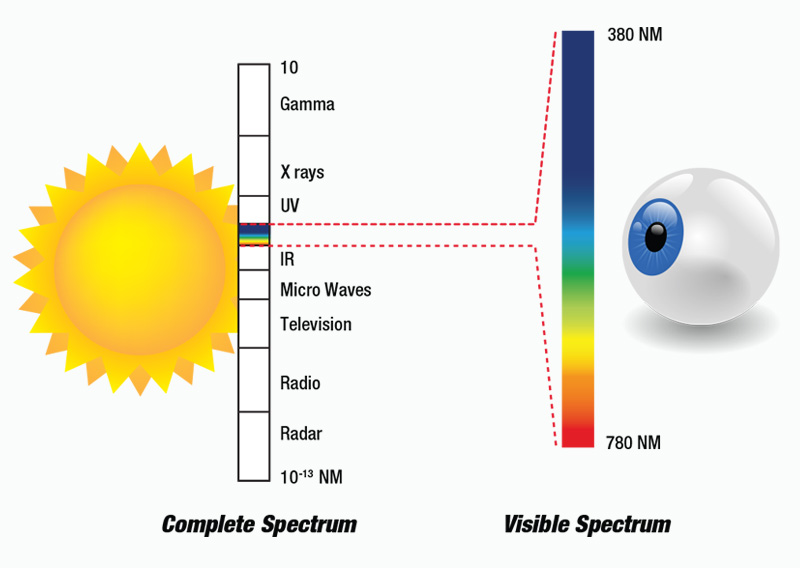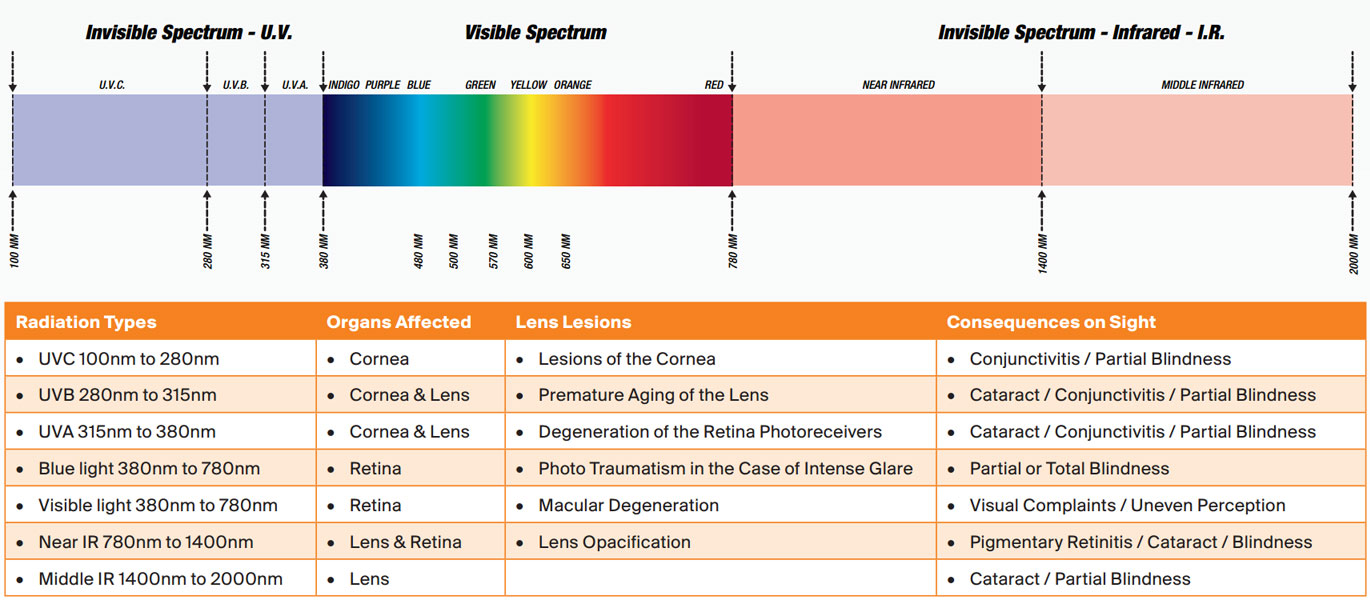
Your Guide to Eye Protection
Wearing the correct protective eye wear decreases risk to the eyes and reduces injuries. Potential hazards which cause eye injuries include ultraviolet and infrared radiation.
We receive wavelengths through two organs; we see light through our eyes and we capture sound through our ears. From radio waves to gamma rays, wavelengths gradually constrict, causing their frequency to increase and making them consume more and more energy. Hence, waves gradually increase in intensity and therefore are more dangerous for the eyes.
The sun emits three types of light waves and without the correct eye protection each in its own way can seriously affect the eye:
1. Ultraviolet Light Rays
• 5% of the sun’s energy reaches the earth in this form. UV rays (invisible “tanning” rays) can cause serious damage to the unprotected eye including the development of cataracts and corneal blistering.
2. Infrared Light Rays
• 50% of the sun’s energy reaches the earth as heat or infrared. Some IR rays will be absorbed by the cornea creating a drying effect; an issue of importance to contact lens wearers.
3. Visible Light Rays
• 45% of the sun’s energy reaches the earth in what the eye perceives as colour. Blue Light waves are the most difficult to see. When the unprotected eye strains to focus on it, all other colours can be distorted. After two to three hours in bright sunlight, eyes can have trouble adjusting to night vision. The human eye is not able to identify the various elements of a ray - it only sees the results, which are a function of the different wavelengths and their respective light intensity.
The human eye can only see wavelengths within the “visible spectrum” (between 380 and 780 nanometres). See below the consequences of visible, ultraviolet and infrared light rays on the eye:

Material Courtesy of Bolle Safety